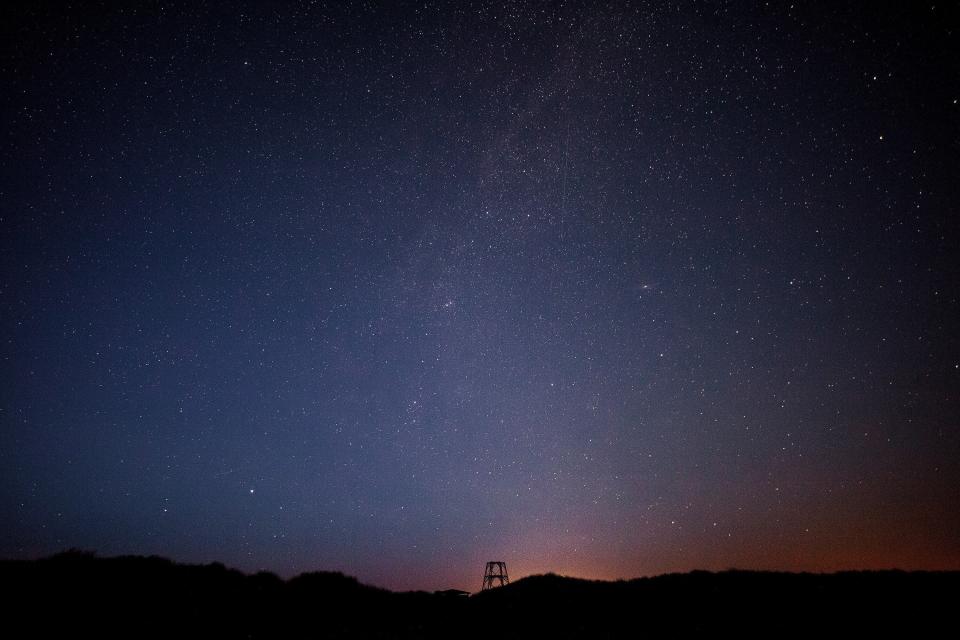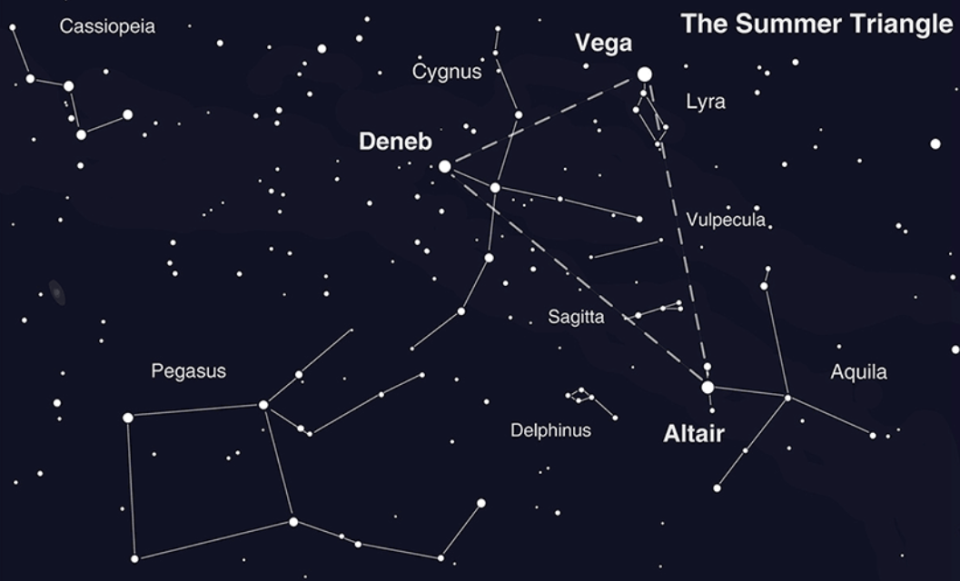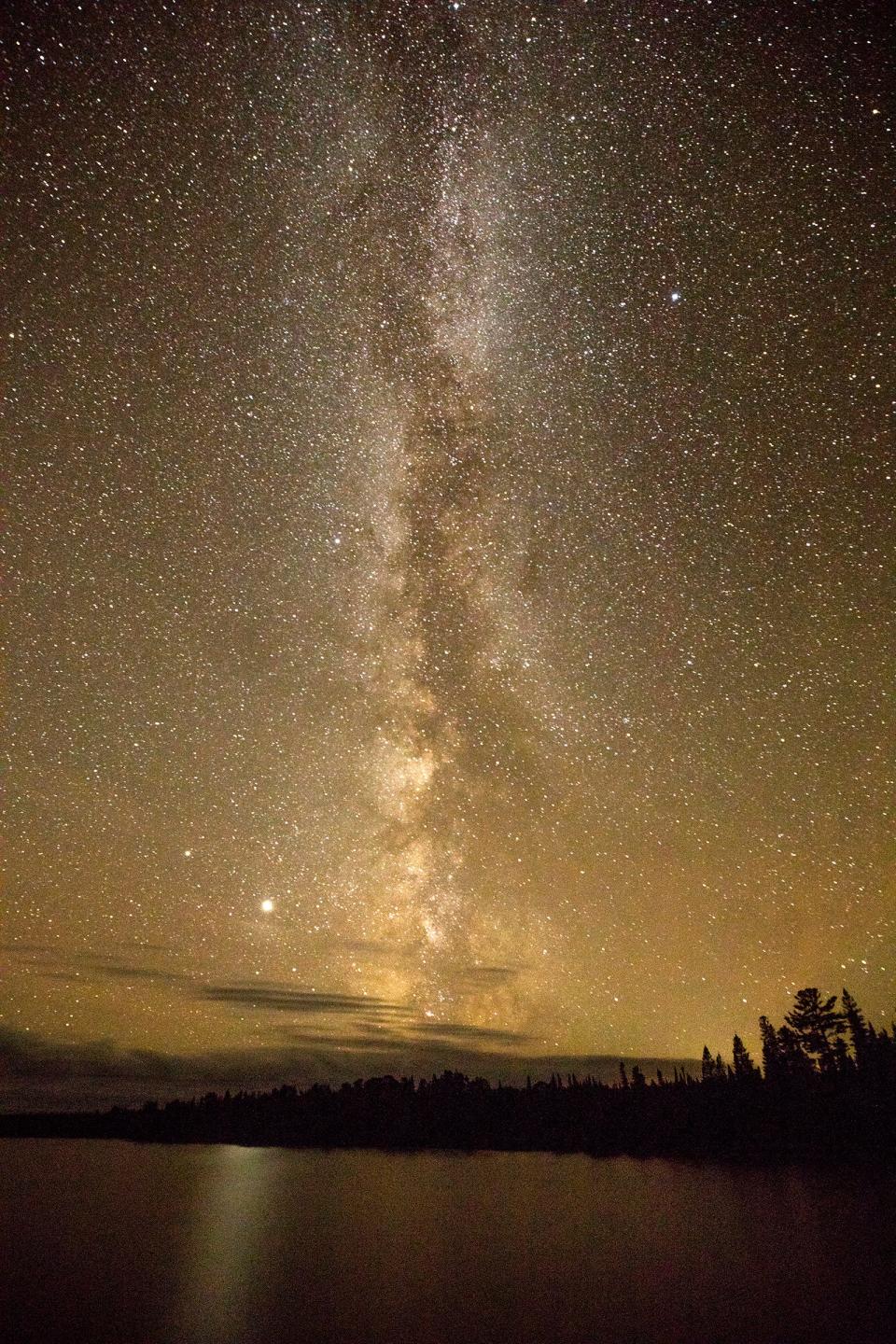Watching the night sky: A guide of where to look and what you can see

A popular summer activity around the region for many is getting outside and looking up, seeing what the night sky has to offer in terms of stars, planets and other celestial bodies.
David Rodgers, chemistry professor at North Central Michigan College who also teaches astronomy, said there are a number of constellations and galaxies that can be seen by stargazers.
"Nearly overhead right now is the Summer Triangle, arguably the most prominent constellation of the summer months in the Northern Hemisphere," said Rodgers. "It comprises three bright stars, Vega, in the constellation Lyra — the Harp — Deneb, in the constellation Cygnus — the Swan — and Altair, in the constellation Aquila, the Eagle."

The Triangle can best be seen between 11 p.m. and 1 a.m.
The disc of the Milky Way galaxy is also visible in the Northern Michigan region, with its plane passing almost directly through the Triangle.
"Additionally, the constellation Sagittarius can be seen easily if one has an unobstructed view of the southern horizon. It appears like a small 'teapot' with its spout pointing to the west, and with its handle on the eastern side," said Rodgers. "The Andromeda Galaxy, which is the closest large galaxy to our own, can also be seen in the northeastern part of the sky after midnight."
Rodgers said to find the galaxy, draw a line from Vega to Daneb, then continue northeastern, toward the horizon. It will look like a blotch of light about the size of the moon.
"It can be seen with the naked eye, but binoculars or a small telescope will work wonders," he said.
Near the end of July and into August, there will be a major meteor shower those watching the night sky will be able to see, if they are lucky, depending on conditions. Rodgers said the full moon scheduled for that time of the month could also make the viewing of the meteors challenging.
Rodgers said typically the southern skies are better for viewing stars and other celestial bodies. Looking south from anywhere around Northern Michigan is looking more toward the center of the galaxy, so the density of stellar objects increases.
"That being said, if one is looking for galaxies outside out Milky Way, other directions may provide better conditions for seeing them, as our Milky Way doesn’t interfere as much with the more distant views," said Rodgers.
In order to better see the night sky and stars, it is better to get away from light pollution. It is also easier to see the other lights of the sky when the moon is below the horizon.
Using a pair of binoculars will help enhance the view, and any sources of light, such as a cell phone or tablet, should be covered with a red film to avoid disruptions in night vision.
There are a number of places around Northern Michigan where stargazers can go to look for celestial bodies. This viewing is typically best done between 11 p.m. and 4 a.m., when the sky is the darkest.
Growing up in North Texas, where city lights inhibited detailed viewing of the night sky, Rodgers said Northern Michigan has an enormous wealth of natural beauty, and some of that is represented by the incredibly dark skies attained from low levels of light pollution.
"I would encourage every resident of the area to savor the truly magnificent vantages that a dark sky provides, and consider that many of those points of light are suns, some like our own, some larger and brighter, some smaller and dimmer," he said.
Inspiration Point, a one-quarter mile pathway in the Pigeon River Country State Forest near Wolverine, follows a pathway of the Civilian Conservation Corps to a scenic overlook where the night sky can be viewed.
More: Remote lodge at tippy-top of the U.P. is now official dark sky park
More: Michigan's Upper Peninsula is home to world's newest dark sky park: What to know

Keweenaw Dark Sky Park on the Keweenaw Peninsula in the Upper Peninsula was also recently named the newest international dark sky park in the state and offers views of the galaxy over Lake Superior.
"Truly, anywhere that is sufficiently dark and cloud-free is a great place to see the stars. In Northern Michigan, we tend to have a great many cloudy days from late September through the beginning of May, so summer observing is doubtless the best," said Rodgers. "That being said, a clear winter night produces spectacular viewing conditions and for those hardy enough to brave the oftentimes frigid conditions associated with clear winter nights, the payoff can be considerable, especially for astrophotographers."
The Headlands International Dark Sky Park near Mackinaw City is situated on the Straits of Mackinac and is a popular destination for stargazing.
"The very best place to go in Michigan to see down to the magnitude limit of the human eye without much risk of being suddenly interrupted by bright lights is The Headlands International Dark Sky Park at Wilderness State Park," said Rodgers. "There are some spectacular views to be had when the weather is clear."
The Petoskey District Library is also offering an event, in partnership with the Michigan Science Center, to teach people about the sun, moon, stars and other objects in the sky on Friday, July 22. It will be hosted at the Carnegie Building, 451 E. Mitchell St., in Petoskey.
The library will be offering three different times for the event, 1 p.m., 1:40 p.m. and 2:20 p.m., for children, teens and families to attend. During each of these sessions, people will be able to learn about the current night sky and how to find bright stars, constellations, planets and more.
Contact Reporter Kortny Hahn at khahn1@gannett.com. Follow her on Twitter at @khahnCDT.
This article originally appeared on Cheboygan Daily Tribune: What can be seen in the night skies of Northern Michigan

 money
money 